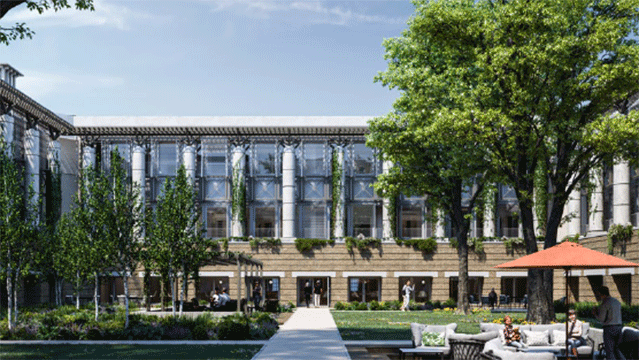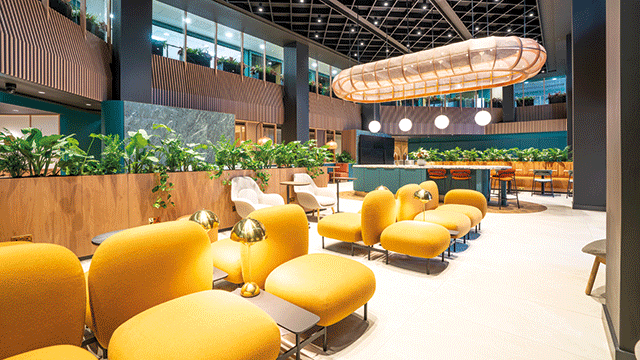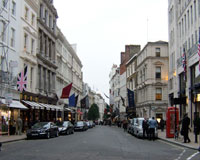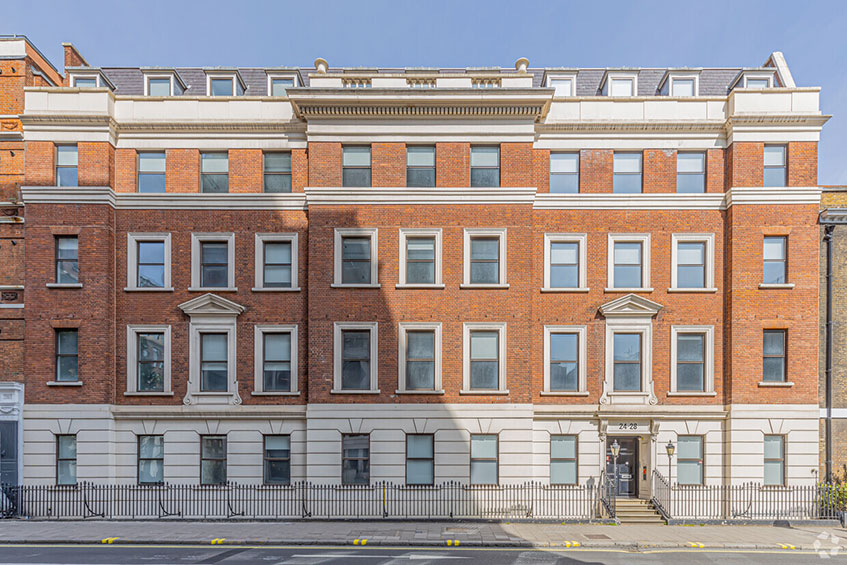
The world we live in is one of ever-increasing consumerism. Social (and social media) pressure to have the latest and best has never been greater. There are also more millionaires both globally and nationally, coming from increasingly diverse backgrounds. But, according to recent figures from Forbes, the current generation – the millennials – are actually more cash-strapped than any previous generation.
So, as a greater number of luxury retailers are entering the market and expanding, why do we seem to be spending more of our hard-earned cash on indulgent purchases? And has this changing balance of wealth also changed the very nature of luxury?
The recent recession was kind to luxury. Recessions almost always are.
“I don’t think it ever went away,” says Mike Wimble, retail partner at Knight Frank. “In terms of central London, it certainly never did.”
For the very highest end of luxury retail – the Bond Street brigade – there was still the same cluster of individuals with the money and the desire to spend that money on luxury.
“As a result, global luxury brands were, to a large extent, immune from the recent financial crisis and maintained their financial performance,” says Peter Dawson, partner at Russell-Cooke.
For Wimble this immunity stems from the immunity of the target consumers. “After all, Lakshmi Mittal may have lost $30m (£19.3m) in 2008, but he made another $40m by the end of the week,” he says. And what is $30m when you are worth $12.3bn?
There was, however, a stall in the growth of the luxury market. “In 2012 only one international luxury fashion brand opened in London,” says Marie Hickey, director of research at Savills. That slump has now been reversed. Last year six new luxury brands came to the capital. “We expect a total of seven to open by the end of 2015, including Erdem and Aquazzura,” says Hickey.
“Luxury has become as much about the visceral experience as the product. It is about personal service, craftsmanship, rarity and more besides.”
So what is driving that? In part it is down to that cliché – the super-wealthy who flock to London in their yachts and private jets to spend like sailors on shore leave. “The truth is that London’s magnetic attractiveness to the wealthy from the rest of the world is crucial,” adds Dawson. Indeed, London remains at the top of the tables in terms of annual visitors, with 17.4m in 2014, because of its cultural and historic “must-visit” status, as well as the capital’s importance as a financial centre.
And it isn’t only the number of visitors that is growing. “The number of millionaires and billionaires is increasing globally too,” says Wimble. “Knightsbridge and Sloane Street or Bond Street will always be where these people want to be.”
The Cadogan Estate, which covers 93 acres of Kensington and Chelsea, has reported unprecedented levels of interest for the flagship store it is currently marketing at 131 Sloane Street, SW1. It has also secured luxury tenants for the remaining six retail units.
“Luxury,” says Hugh Seaborn, Cadogan’s chief executive, “has become as much about the visceral experience as the product. It is about personal service, craftsmanship, rarity and more besides.”
That may explain the enduring appeal of Sloane Street or Bond Street. But what about elsewhere?
Across the capital, indeed, across the nation, spending on indulgences is growing at an unprecedented rate.
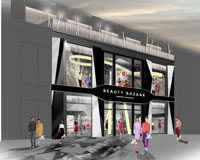
Bluewater, for instance, has reported a 21% year-to-date increase in sales, driven largely by premium watch brands and high-end jewellery. This, in turn, is attracting more luxury retailers to the centre. Breitling’s store, which opened in October, is its first outside the traditional central London luxury quarters.
Outside London, the Beauty Bazaar at Liverpool One – the first outside London – has been performing consistently well since opening over three years ago. Michael Kors has also recently opened a store there, confirming the demand for designer accessories and fashion. Centre:mk is also experiencing strong sales in beauty and jewellery, with some specific brands reported to be planning to expand.
For Clare Owen, head of marketing at Seven Dials, the reason for this growth is that people have become more demanding. “They want quality, uniqueness, and they are willing to pay for that,” she says.
So has the UK, in the glow of the post‑recession, gone on a spending binge? For Edward Cooke, director of policy and public affairs at the British Council of Shopping Centres, it is rather more complex than that. “Rather than becoming ‘a nation of indulgent purchasers’ post-recession, consumers now cross over different brands. A typical shopper tends to mix luxury with disposable fashion.”
That mix has led to most sporting a curious melange of luxury and disposable – from Prada to Primark – in a single outfit. “Where they want quality is on the things they put next to their skin – beauty products and jewellery, for example,” says Owen. “But, vitally, they also want something unique that you can’t find elsewhere.”
At Seven Dials this preference has dictated the recent lettings. Larsson & Jennings opened its first standalone store in the UK in November 2014 and experienced record sales. Designer watch brand Nixon opened in October. Fresh, which sells skincare and fragrances, is opening on Monmouth Street in November.
The rise of “indulgent” retail, Harris argues, is as much to do with this broadening of the customer base as with people buying genuine “luxury” items. “There is much less brand-shaming than there was,” says Harris. “The fashion is more about having some entry-level and then some premium products. People mix and match.”
Cadogan’s Seaborn agrees. “We see consumers mixing and matching lower-priced ‘affordable luxury’ with high-end luxury items,” he says. The Cadogan estate attempts to mirror this by having “layers” of luxury under a single ownership and estate management. “We have affordable luxury at Duke of York Square, through to the couture offering of Sloane Street.”
This desire to mix and match has gone so far that Seven Dials now blanches at the idea that it is even selling “luxury” (see opposite). Indeed, Charles Owen, the estate’s portfolio manager, says that it would not welcome a traditional Bond Street brand on its patch. “We have a strategy for each street,” says Owen. “Monmouth Street is more high end. But if a Bond Street brand wanted to come in, the question would have to be, ‘Why do you want to be here? What are you offering our area?’”
Luxury has become democratised. Low interest rates, finance options – especially on items such as iPads and cars – and a greater exposure to “celebrity-endorsed fashion”, along with a changing demographic among the wealthy, has meant that almost anyone can have a little bit of luxury.
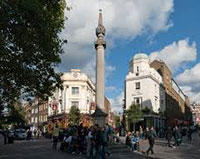
Accessible luxury
“It all depends on what you class as luxury,” muses Knight Frank’s Mike Wimble. “Is it just the uber-wealthy dropping tens of thousands on a handbag? Or is there such a thing as aspirational or even affordable luxury?”
Yes and no, says Seven Dials, which caters to those wanting to splash out, but draws the line at £7,000 dresses.
“The word ‘luxury’ brings us out in hives,” jokes Clare Harris, head of marketing at Seven Dials. “We have to have authentic London villages. The brands we have are not going to be the same as people will get in Dubai airport. That exclusive category is not what we are about.”
However, there is a growing demand for “unique, crafted products”, she adds. “And some of those can have a pretty hefty price tag.”
For a “London village” such as Seven Dials, the customer is as likely to be local as a well-heeled visitor from overseas. Indeed, the ratio is nearer 60:40.
But within that is a new demographic of wealthy, but non-traditional customers. Facebook and the makers of Candy Crush have their offices in Seven Dials. By and large, they are not the types who want what Bond Street traditionally has to offer.
“The spread of wealth has changed,” says Seven Dials’ Charles Owen. “It is no longer the chap in his country pile with his jag. There are different ages and backgrounds, but they are all wanting uniqueness and quality.”
For Wimble, this is key. “The people wanting to spend on indulgences are no longer conservative,” he says. “They aren’t buying out of a desire to conform.”
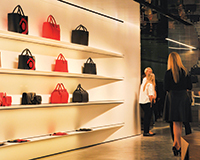
Bond Street creep
It used to be a quiet string of offices near Oxford Street, punctuated by a post office and couple of hardware stores. Now the upstart Albemarle Street looks like the twin of its old-money neighbour, Bond Street. Alexander Wang has made the old post office his flagship, Victoria Beckham is only the width of a waif’s waist away, and the footfall is just as high, and as classy.
“The luxury quarters of Mayfair are changing,” says Knight Frank’s Mike Wimble. “The pitches, the streets, are beginning to redefine themselves in terms of what goes where.”
Some people remember when Bond Street just meant the old one, before the diffusion brands colonised New Bond Street. That country cousin is now the bastion of Mayfair’s luxury quarter, and the brands are conquering more turf.
“There is definitely luxury creep in terms of the streets and areas that are seen as ‘luxury’,” says Wimble. Albemarle and Mount Street are notable, but others are redefining themselves as a centre for high-end clothes, jewellery and furniture, partly as a response to the growth in high-end residential. “Wigmore Street used to have a Magnet,” says Wimble. “Now it has a Fendi.”
The level of the rents reflect the old boundaries. Those off Bond Street can be half those of the main strip. But that could change. “Retailers are like sheep,” says Wimble. “Once one goes in, they all do.” And then the prices rise.
This luxury creep is, of course, caused by an inability to get the right space on the right street, says Anthony Selwyn, head of central London retail at Savills. This also explains the slight reduction of international entrants in total, from 33 to 28.
“Availability constraints on Bond Street, the traditional first point of call for any new luxury entrant, have meant an increasing number of brands looking to new emerging luxury destinations for opportunities,” says Selwyn. Indeed, all four of the new luxury openings expected by the end of this year will be beyond Bond Street, in the wider luxury quarter of Mayfair, such as Albemarle Street and South Audley Street.




